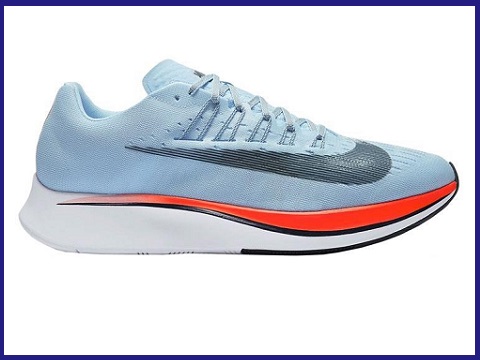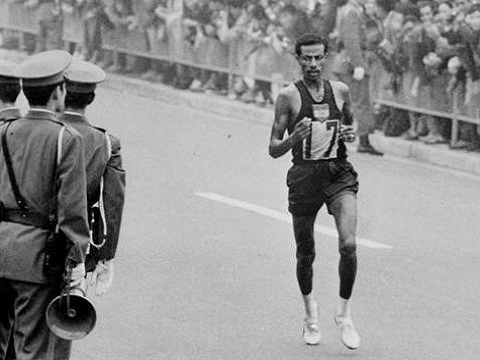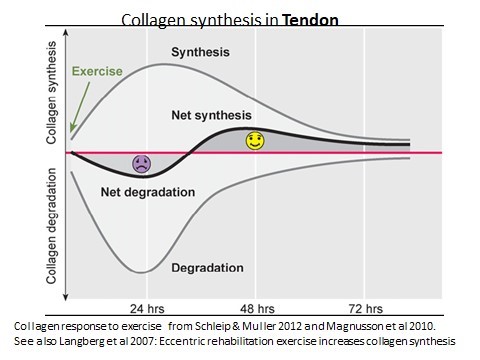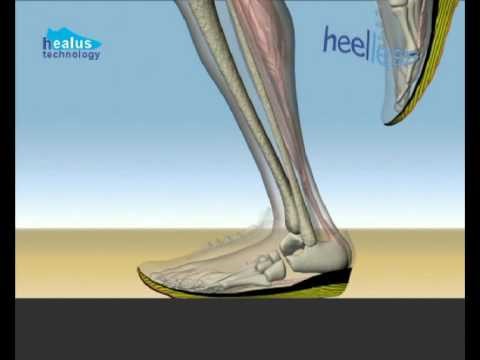This article was presented at Staffordshire Conference on Clinical Biomechanics 2018 Footwear Day 27th April 2018

Authors: Adri Hartveld, Henri Havinga, Roozbeh Naemi and Peter Gerth
Corresponding author: Adri Hartveld, Healus Technology, Newcastle-under-Lyme, UK adri@healus.co.uk
Introduction
Reducing the loading rate of the foot strike during running is important to reduce fatigue during long distance running, as well as musculoskeletal injuries. This impact attenuation involves spreading the force over a longer period to bring the body to a very brief stand still prior to push off. The loading rate reduction is through both active and passive mechanisms including the shoe sole (Naemi & Chockalingam 2013).
Therefore, a greater sole height can reduce the requirement of leg muscles and joints’ cartilage to absorb the shock. However increased sole weight increases the energetic costs of running (Franz et al 2012).
Method
Our team used our knowledge on biomechanical mathematical modelling to calculate and verify the energetic costs and impact attenuation during the running tests as described in Hoogkamer et al’s article in Sports Medicine. We related these results to our own laboratory testing of shoe soles.
Results
Hoogkamer et al (2017) compared three different pairs of light weight marathon racing footwear in a within subjects trial with 18 high calibre athletes. The results demonstrated a consistent, and on average 4 percent, reduction of energetic costs in running in the Nike VaporFly shoes (NP) in comparison with the adidas adizero adios BOOST (AB) and the Nike Zoom Streak racing shoes NS).
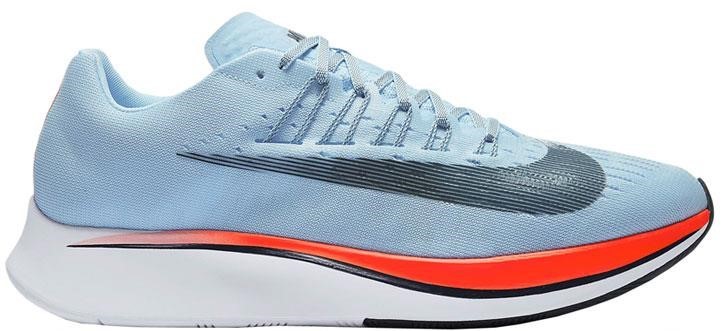
Figure 1. Nike VaporFly and Zoom Fly running shoes with the black line representing the sole plate
Although the authors emphasized the, very small, differences in resilience (energy return) between the soles of the three pairs of shoes, the details about the footwear and its mechanical testing showed much greater difference in the sole depths. As a result the Nike VaporFly prototype shoes were approximately twofold more compliant than the Nike Zoom Streak and the Adidas Boost shoes, deforming 11.9 mm versus 6.1 and 5.9 mm respectively. This allowed the VaporFly footwear to store substantially more mechanical energy (7.46 J of mechanical energy per step versus 3.38 J and 3.56 J respectively).
Hartveld et al (2016) compared the force deformation on a low density polyurethane sole unit with and without a flax fibre reinforced plate. In this laboratory test, the force to deform the unit to 50% its original thickness was 2.27 – 3.25 times higher, when a plate positioned on top of a low density shoe sole, compared to when the sole was compressed without such plate. The plate enables the distribution of force over much bigger loaded volume with subsequent greater resistance to the downwards force. Without the plate, with the same downward force, the same low density sole unit bottomed out. The plate greatly enhanced the stiffness of the complete sole through the resistance to deformation by the fibres reinforcing the thermoplastic plate.
Conclusion
The essential design difference between the Nike VaporFly (NP) and the adidas Boost (AB) footwear is the carbon fibre reinforced plate situated above sole material with a much lower density, but much greater depth. Similar to most current road running footwear, the adidas adizero Boost shoes have a 23mm heel height and 13mm forefoot height, and no reinforcing plate. The Nike VaporFly has a carbon-fibre reinforced plate across the foot and a 31mm heel height and a 21mm forefoot height.
The VaporFly shoe soles are both stiff and compliant and can therefore decelerate the human body over a greater distance, resisting the deformation across the thickness of the sole during the impact phase of the running stride. Hoogkamer et al demonstrated this to be the case. From their data we calculated the energetic costs, see Table 1.
| NS | AB | NP | |
| Stored Energy | 5.00 | 4.69 | 8.57 |
| Returned Energy | 3.28 | 3.56 | 7.46 |
| Energy Loss | 1.72 | 1.13 | 1.11 |
Table 1. Calculated energy per step. The energy loss in the Nike NP shoe is not significantly different from the Adidas AB shoes. However the stored energy in the Nike NP shoes is 54% greater.
We conclude that the fibre reinforced rigid plate above the compliant sole in the VaporFly shoes allows the polyether block amide foam material to be of lower density and lighter weight. Although the sole has a much greater height the full shoe is lighter. This is due to the much lower sole density of the sole as compared to the sole of Adidas Boost and the Nike Streak. As a result the sole becomes twice as compliant without a bottoming-out effect.
During running the plate situated underneath the runner’s calcaneus, cuboid and metatarsal heads enables the shoe to be more compliant and absorb more energy with less weight. With a more compliant sole, the demand, especially on the calf muscles, to attenuate the shock on foot strike is reduced. This reduction of energetic costs of the extensor leg muscles will enable a marathon runner to run for longer at a faster pace. Such compliant shoe sole can also aid in reducing the repetitive impact forces on the body, which is part of the prevention of overuse injuries.
For future footwear developments we conclude that running shoes will assist in improving distance running performances when fibre reinforced plates are incorporated in the shoes. Such plates need to support the calcaneus as well as the metatarsal heads, and need to be situated at the top of a low density mid and outer sole as in Hartveld (2013). Future research and development of the material and shape characteristics of such plate is needed to help the health and fitness of millions of runners globally.
References
Franz, J.R., Wierzbinski, C.M & Kram, R. (2012) “Metabolic cost of running barefoot versus shod: is lighter better?” Med Sci Sports Exerc.; 44(8):1519-25
Hartveld, A., Chatzistergos, P. & Naemi, R. (2016) “Sole Force Distribution system increases footwear’s shock absorption”, Proceedings / Presentation at Staffordshire Conference Clinical Biomechanics 22nd April 2016
Hartveld, A. (2013) “Dynamic Footwear that Aligns the Body and Absorbs the Impact” US Patent Application No US 2013/0205619.
Hoogkamer, W., Kipp, S., Frank, J.H. Farina, E.M., Luo, G. & Kram, R. (2017), “A Comparison of the Energetic Cost of Running in Marathon Racing Shoes”, Sports Med. DOI 10.1007/s40279-017-0811-2
Naemi, R. & Chockalingam, N. (2013) “Mathematical Models to Assess Foot–Ground Interaction: An Overview” Med. Sci. Sports Exerc., 45, 8, pp. 1524–1533
